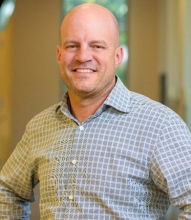MSE 298 Seminar: (Zoom) Biomolecules for Non-Biological Things - Materials Construction Through Peptides Design and Solution Assembly

Professor and Chair
Department of Materials Science and Engineering
University of Delaware
Zoom: Meeting ID 978 9061 7262, Passcode 438317
Abstract: Self-assembly of molecules is an attractive materials construction strategy due to its simplicity in application. By considering peptidic molecules in the bottom-up materials self-assembly design process, one can take advantage of inherently biomolecular attributes; intramolecular folding events, secondary structure, and electrostatic interactions; in addition to more traditional self-assembling molecular attributes such as amphiphilicty, to define hierarchical material structure and consequent properties. A new solution assembled system comprised of theoretically designed coiled coil bundle motifs, or "Bundlemers," will be introduced. The molecules are not natural amino acid sequences and provide opportunity for arbitrary nanostructure creation with peptides. With control of the display of all amino acid side chains (both natural and non-natural) throughout the peptide bundles, desired physical and covalent (through appropriate "click" chemistry) interactions have been designed to produce one- and two-dimensional nanostructures. One-dimensional nanostructures span exotically rigid rod molecules that produce a wide variety of liquid crystal phases to semi-flexible chains, the flexibility of which are controlled by the interbundle linking chemistry. Two-dimensional nanostructure can be formed by designed physical interactions and are also nanostructures not observed in nature. All of the assemblies can be responsive to temperature since the individual bundle building blocks are physically stabilized coiled coil bundles that can be melted and reformed with temperature. Additionally, novel nanostructures to be discussed include uniform nanotubes as well as the templated growth of metallic nanoparticles on, and within, peptide nanostructures. Recent bundlemer design allows specific control of the electrostatic charges on individual bundlemer building blocks. Included in the discussion will be molecule design, hierarchical assembly pathway design and control, click chemistry reactions, and the characterization of nanostructure via microscopy, scattering, and rheological measurements, as well as inherent material properties (e.g., extreme stiffness, responsiveness to temperature and pH, stability in aqueous and organic solvents).
Bio: Darrin Pochan is currently professor and chair of the Materials Science and Engineering Department as well as having appointments in the Delaware Biotechnology Institute and Department of Chemistry at the University of Delaware. Since joining the MSE department in 1999 after a Ph.D. in polymer science and engineering at the University of Massachusetts-Amherst and a National Research Council post-doctoral fellowship at the National Institute of Standards and Technology in Gaithersburg, MD, he has developed a research program around the construction of new materials and nanostructures via molecular solution assembly mechanisms. Areas of focus are polymer and biomolecular self-assembly, biomaterials, and materials for nanotechnology and energy applications through organic/inorganic hybrids. His honors include an NSF Career Award, the DuPont Young Faculty Award, the Dillon medal from the American Physical Society and fellowship in the American Physical Society, American Chemical Society, and Royal Society of Chemistry. He recently ended his tenure as editor in chief of Soft Matter published by the Royal Society of Chemistry in the United Kingdom.
Share
Upcoming Events
-
EECS Seminar: On-device Contextual AI – Challenges and Opportunities
-
MAE 298 SEMINAR: Control and Estimation of Turbulent Shear Flows using Modal Analysis
-
CBE 298 Seminar: Enabling Inverse Design of Molecules to Drive Defined Physiological Outcomes - A Critical Role for Systems Modeling in a Data-Driven World
-
MSE Special Seminar: Organic Semiconductor-incorporated Perovskites (OSIP) – A New Family of Hybrid
-
CEE Seminar: UV-based Treatment Processes for Treatment of Contaminants of Emerging Concern in Context of Water Reuse
